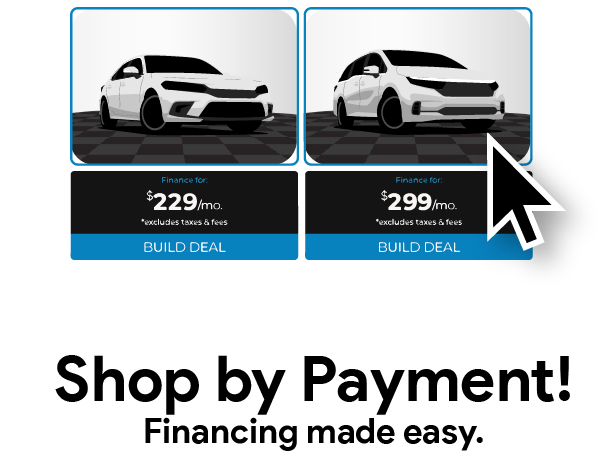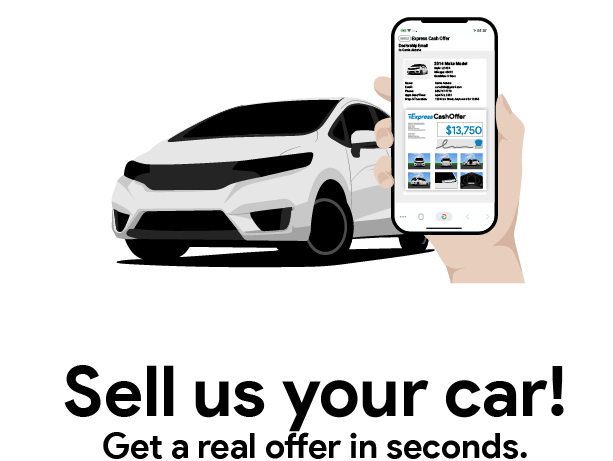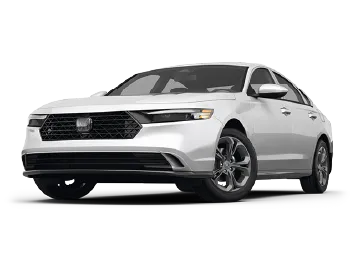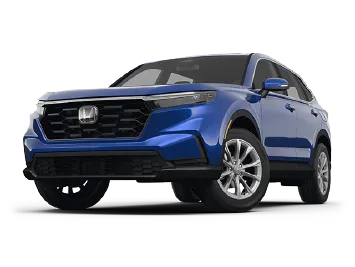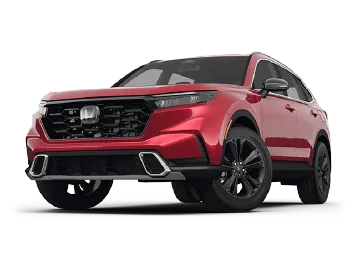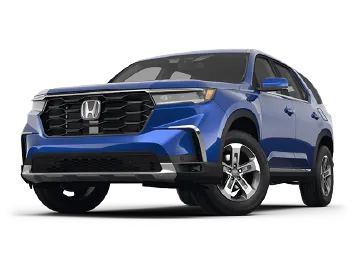2024 Honda CR-V SPORT HYBRID W/BSI AWD
Available Specials and Offers
Lease Offer: ZERO Due at Signing. Unveiling Exceptional Offers on the Honda CR-V – Act Now and Experience the Ultimate Driving Pleasure! Discover unparalleled opportunities as you consider buying or leasing a brand-new Honda from Brandon Honda. Get a 2024 Honda CR-V SPORT HYBRID W/BSI AWD for only $349/mo. for 36 mos. or get 3.9% APR for 36 mos.
2024 Honda Accord SPORT HYBRID
Available Specials and Offers
Lease Offer: ZERO Due at Signing. Unveiling Exceptional Offers on the Honda Accord – Act Now and Experience the Ultimate Driving Pleasure! Discover unparalleled opportunities as you consider buying or leasing a brand-new Honda from Brandon Honda. Get a 2024 Honda Accord SPORT HYBRID for only $349/mo. for 36 mos. or get 3.9% APR for 36 mos.
2024 Honda Accord LX FWD
Available Specials and Offers
Lease Offer: ZERO Due at Signing. Unveiling Exceptional Offers on the Honda Accord – Act Now and Experience the Ultimate Driving Pleasure! Discover unparalleled opportunities as you consider buying or leasing a brand-new Honda from Brandon Honda. Get a 2024 Honda Accord LX FWD for only $229/mo. for 36 mos. or get 3.9% APR for 36 mos.
2024 Honda Civic LX FWD
Available Specials and Offers
Lease Offer: ZERO Due at Signing. Unveiling Exceptional Offers on the Honda Civic – Act Now and Experience the Ultimate Driving Pleasure! Discover unparalleled opportunities as you consider buying or leasing a brand-new Honda from Brandon Honda. Get a 2024 Honda Civic LX FWD for only $229/mo. for 36 mos. or get 3.9% APR for 36 mos.
2024 Honda Pilot LX 2WD
Available Specials and Offers
Lease Offer: ZERO Due at Signing. Unveiling Exceptional Offers on the Honda Pilot – Act Now and Experience the Ultimate Driving Pleasure! Discover unparalleled opportunities as you consider buying or leasing a brand-new Honda from Brandon Honda. Get a 2024 Honda Pilot LX 2WD for only $379/mo. for 36 mos. or get 3.9% APR for 36 mos.
2024 Honda CR-V LX FWD
Available Specials and Offers
Lease Offer: ZERO Due at Signing. Unveiling Exceptional Offers on the Honda CR-V – Act Now and Experience the Ultimate Driving Pleasure! Discover unparalleled opportunities as you consider buying or leasing a brand-new Honda from Brandon Honda. Get a 2024 Honda CR-V LX FWD for only $279/mo. for 36 mos. or get 2.9% APR for 36 mos.
2024 Honda HR-V LX FWD
Available Specials and Offers
Lease Offer: ZERO Due at Signing. Unveiling Exceptional Offers on the Honda HR-V – Act Now and Experience the Ultimate Driving Pleasure! Discover unparalleled opportunities as you consider buying or leasing a brand-new Honda from Brandon Honda. Get a 2024 Honda HR-V LX FWD for only $269/mo. for 36 mos. or get 3.9% APR for 36 mos.
2024 Honda Odyssey EX
Available Specials and Offers
Lease Offer: ZERO Due at Signing. Unveiling Exceptional Offers on the Honda Odyssey – Act Now and Experience the Ultimate Driving Pleasure! Discover unparalleled opportunities as you consider buying or leasing a brand-new Honda from Brandon Honda. Get a 2024 Honda Odyssey EX for only $479/mo. for 36 mos. or get 3.9% APR for 36 mos.
2024 Honda Passport EX-L AWD
Available Specials and Offers
Lease Offer: ZERO Due at Signing. Unveiling Exceptional Offers on the Honda Passport – Act Now and Experience the Ultimate Driving Pleasure! Discover unparalleled opportunities as you consider buying or leasing a brand-new Honda from Brandon Honda. Get a 2024 Honda Passport EX-L AWD for only $389/mo. for 36 mos. or get 2.9% APR for 36 mos.
2024 Honda Ridgeline Sport
Available Specials and Offers
Lease Offer: ZERO Due at Signing. Unveiling Exceptional Offers on the Honda Ridgeline – Act Now and Experience the Ultimate Driving Pleasure! Discover unparalleled opportunities as you consider buying or leasing a brand-new Honda from Brandon Honda. Get a 2024 Honda Ridgeline SPORT for only $349/mo. for 36 mos. or get 2.9% APR for 36 mos.
Additional Information
36 month lease payments are plus tax, tag, title, registration with $ZERO due at lease signing. 10,000 miles per year. Payment includes all applicable Honda factory to dealer incentives. Payment does not include a pre-delivery service fee of $1,198, Private Tag Agency Fee of $189, and Electronic Registration Filing Fee of $559.55, which charges represent costs and profits to the dealer for items such as inspecting, cleaning, and adjusting vehicles and preparing documents related to the sale. New Vehicle pricing excludes the $3,971 Brandon Honda Protection Package. The payment does not include Manufacturer destination fee of $1,350 for CR-V. Price does not include any dealer installed accessories. All offers include all applicable Brandon Honda Advantage Club discounts. All offers are mutually exclusive and cannot be combined with other offers. All vehicles subject to prior sale. All price quotes shown assume that taxes and fees will be paid at the time of sale by the customer. All Zero down offers are subject to credit approval. Not all buyers will qualify. See dealer for complete details. Offer expires 04/30/2024.
36 month lease payments are plus tax, tag, title, registration with $ZERO due at lease signing. 10,000 miles per year. Payment includes all applicable Honda factory to dealer incentives. Payment does not include a pre-delivery service fee of $1,198, Private Tag Agency Fee of $189, and Electronic Registration Filing Fee of $559.55, which charges represent costs and profits to the dealer for items such as inspecting, cleaning, and adjusting vehicles and preparing documents related to the sale. New Vehicle pricing excludes the $3,971 Brandon Honda Protection Package. The payment does not include Manufacturer destination fee of $1,095 for Accord Hybrid. Price does not include any dealer installed accessories. All offers include all applicable Brandon Honda Advantage Club discounts. All offers are mutually exclusive and cannot be combined with other offers. All vehicles subject to prior sale. All price quotes shown assume that taxes and fees will be paid at the time of sale by the customer. All Zero down offers are subject to credit approval. Not all buyers will qualify. See dealer for complete details. Offer expires 04/30/2024.
36 month lease payments are plus tax, tag, title, registration with $ZERO due at lease signing. 10,000 miles per year. Payment includes all applicable Honda factory to dealer incentives. Payment does not include a pre-delivery service fee of $1,198, Private Tag Agency Fee of $189, and Electronic Registration Filing Fee of $559.55, which charges represent costs and profits to the dealer for items such as inspecting, cleaning, and adjusting vehicles and preparing documents related to the sale. New Vehicle pricing excludes the $3,971 Brandon Honda Protection Package. The payment does not include Manufacturer destination fee of $1,095 for Accord. Price does not include any dealer installed accessories. All offers include all applicable Brandon Honda Advantage Club discounts. All offers are mutually exclusive and cannot be combined with other offers. All vehicles subject to prior sale. All price quotes shown assume that taxes and fees will be paid at the time of sale by the customer. All Zero down offers are subject to credit approval. Not all buyers will qualify. See dealer for complete details. Offer expires 04/30/2024.
36 month lease payments are plus tax, tag, title, registration with $ZERO due at lease signing. 10,000 miles per year. Payment includes all applicable Honda factory to dealer incentives. Payment does not include a pre-delivery service fee of $1,198, Private Tag Agency Fee of $189, and Electronic Registration Filing Fee of $559.55, which charges represent costs and profits to the dealer for items such as inspecting, cleaning, and adjusting vehicles and preparing documents related to the sale. New Vehicle pricing excludes the $3,971 Brandon Honda Protection Package. The payment does not include Manufacturer destination fee of $1,095 for Civic. Price does not include any dealer installed accessories. All offers include all applicable Brandon Honda Advantage Club discounts. All offers are mutually exclusive and cannot be combined with other offers. All vehicles subject to prior sale. All price quotes shown assume that taxes and fees will be paid at the time of sale by the customer. All Zero down offers are subject to credit approval. Not all buyers will qualify. See dealer for complete details. Offer expires 04/30/2024.
36 month lease payments are plus tax, tag, title, registration with $ZERO due at lease signing. 10,000 miles per year. Payment includes all applicable Honda factory to dealer incentives. Payment does not include a pre-delivery service fee of $1,198, Private Tag Agency Fee of $189, and Electronic Registration Filing Fee of $559.55, which charges represent costs and profits to the dealer for items such as inspecting, cleaning, and adjusting vehicles and preparing documents related to the sale. New Vehicle pricing excludes the $3,971 Brandon Honda Protection Package. The payment does not include Manufacturer destination fee of $1,395 for Pilot. Price does not include any dealer installed accessories. All offers include all applicable Brandon Honda Advantage Club discounts. All offers are mutually exclusive and cannot be combined with other offers. All vehicles subject to prior sale. All price quotes shown assume that taxes and fees will be paid at the time of sale by the customer. All Zero down offers are subject to credit approval. Not all buyers will qualify. See dealer for complete details. Offer expires 04/30/2024.
36 month lease payments are plus tax, tag, title, registration with $ZERO due at lease signing. 10,000 miles per year. Payment includes all applicable Honda factory to dealer incentives. Payment does not include a pre-delivery service fee of $1,198, Private Tag Agency Fee of $189, and Electronic Registration Filing Fee of $559.55, which charges represent costs and profits to the dealer for items such as inspecting, cleaning, and adjusting vehicles and preparing documents related to the sale. New Vehicle pricing excludes the $3,971 Brandon Honda Protection Package. The payment does not include Manufacturer destination fee of $1,350 for CR-V. Price does not include any dealer installed accessories. All offers include all applicable Brandon Honda Advantage Club discounts. All offers are mutually exclusive and cannot be combined with other offers. All vehicles subject to prior sale. All price quotes shown assume that taxes and fees will be paid at the time of sale by the customer. All Zero down offers are subject to credit approval. Not all buyers will qualify. See dealer for complete details. Offer expires 04/30/2024.
36 month lease payments are plus tax, tag, title, registration with $ZERO due at lease signing. 10,000 miles per year. Payment includes all applicable Honda factory to dealer incentives. Payment does not include a pre-delivery service fee of $1,198, Private Tag Agency Fee of $189, and Electronic Registration Filing Fee of $559.55, which charges represent costs and profits to the dealer for items such as inspecting, cleaning, and adjusting vehicles and preparing documents related to the sale. New Vehicle pricing excludes the $3,971 Brandon Honda Protection Package. The payment does not include Manufacturer destination fee of $1,350 for HR-V. Price does not include any dealer installed accessories. All offers include all applicable Brandon Honda Advantage Club discounts. All offers are mutually exclusive and cannot be combined with other offers. All vehicles subject to prior sale. All price quotes shown assume that taxes and fees will be paid at the time of sale by the customer. All Zero down offers are subject to credit approval. Not all buyers will qualify. See dealer for complete details. Offer expires 04/30/2024.
36 month lease payments are plus tax, tag, title, registration with $ZERO due at lease signing. 10,000 miles per year. Payment includes all applicable Honda factory to dealer incentives. Payment does not include a pre-delivery service fee of $1,198, Private Tag Agency Fee of $189, and Electronic Registration Filing Fee of $559.55, which charges represent costs and profits to the dealer for items such as inspecting, cleaning, and adjusting vehicles and preparing documents related to the sale. New Vehicle pricing excludes the $3,971 Brandon Honda Protection Package. The payment does not include Manufacturer destination fee of $1,395 for Odyssey. Price does not include any dealer installed accessories. All offers include all applicable Brandon Honda Advantage Club discounts. All offers are mutually exclusive and cannot be combined with other offers. All vehicles subject to prior sale. All price quotes shown assume that taxes and fees will be paid at the time of sale by the customer. All Zero down offers are subject to credit approval. Not all buyers will qualify. See dealer for complete details. Offer expires 04/30/2024.
36 month lease payments are plus tax, tag, title, registration with $ZERO due at lease signing. 10,000 miles per year. Payment includes all applicable Honda factory to dealer incentives. Payment does not include a pre-delivery service fee of $1,198, Private Tag Agency Fee of $189, and Electronic Registration Filing Fee of $559.55, which charges represent costs and profits to the dealer for items such as inspecting, cleaning, and adjusting vehicles and preparing documents related to the sale. New Vehicle pricing excludes the $3,971 Brandon Honda Protection Package. The payment does not include Manufacturer destination fee of $1,395 for Passport. Price does not include any dealer installed accessories. All offers include all applicable Brandon Honda Advantage Club discounts. All offers are mutually exclusive and cannot be combined with other offers. All vehicles subject to prior sale. All price quotes shown assume that taxes and fees will be paid at the time of sale by the customer. All Zero down offers are subject to credit approval. Not all buyers will qualify. See dealer for complete details. Offer expires 04/30/2024.
36 month lease payments are plus tax, tag, title, registration with $ZERO due at lease signing. 10,000 miles per year. Payment includes all applicable Honda factory to dealer incentives. Payment does not include a pre-delivery service fee of $1,198, Private Tag Agency Fee of $189, and Electronic Registration Filing Fee of $559.55, which charges represent costs and profits to the dealer for items such as inspecting, cleaning, and adjusting vehicles and preparing documents related to the sale. New Vehicle pricing excludes the $3,971 Brandon Honda Protection Package. The payment does not include Manufacturer destination fee of $1,395 for Ridgeline. Price does not include any dealer installed accessories. All offers include all applicable Brandon Honda Advantage Club discounts. All offers are mutually exclusive and cannot be combined with other offers. All vehicles subject to prior sale. All price quotes shown assume that taxes and fees will be paid at the time of sale by the customer. All Zero down offers are subject to credit approval. Not all buyers will qualify. See dealer for complete details. Offer expires 04/30/2024.
Additional Information
Available on approved credit through Honda Financial Services, 3.9% APR for up to 36 months on select new and unregistered 2024 Honda CR-V Hybrid models through 04/30/2024, for well-qualified buyers. Not all buyers will qualify. Higher financing rates apply for buyers with lower credit ratings. Actual down payment may vary. All price quotes shown assume that taxes and fees will be paid at the time of sale by the customer in addition to the down payment amount stated or shown. See dealer for details.
Available on approved credit through Honda Financial Services, 3.9% APR for up to 36 months on select new and unregistered 2024 Honda Accord Hybrid models through 04/30/2024, for well-qualified buyers. Not all buyers will qualify. Higher financing rates apply for buyers with lower credit ratings. Actual down payment may vary. All price quotes shown assume that taxes and fees will be paid at the time of sale by the customer in addition to the down payment amount stated or shown. See dealer for details.
Available on approved credit through Honda Financial Services, 3.9% APR for up to 36 months on select new and unregistered 2024 Honda Accord models through 04/30/2024, for well-qualified buyers. Not all buyers will qualify. Higher financing rates apply for buyers with lower credit ratings. Actual down payment may vary. All price quotes shown assume that taxes and fees will be paid at the time of sale by the customer in addition to the down payment amount stated or shown. See dealer for details.
Available on approved credit through Honda Financial Services in select states only. 3.9% APR for up to 36 months on select new and unregistered 2024 Honda Civic models through 04/30/2024, for well-qualified buyers. Not all buyers will qualify. Higher financing rates apply for buyers with lower credit ratings. Residency restrictions apply. Actual down payment may vary. All price quotes shown assume that taxes and fees will be paid at the time of sale by the customer in addition to the down payment amount stated or shown. See dealer for details.
Available on approved credit through Honda Financial Services, 3.9% APR for up to 36 months on select new and unregistered 2024 Honda Pilot models through 04/30/2024, for well-qualified buyers. Not all buyers will qualify. Higher financing rates apply for buyers with lower credit ratings. Actual down payment may vary. All price quotes shown assume that taxes and fees will be paid at the time of sale by the customer in addition to the down payment amount stated or shown. See dealer for details.
Available on approved credit through Honda Financial Services, 2.9% APR for up to 36 months on select new and unregistered 2024 Honda CR-V models through 04/30/2024, for well-qualified buyers. Excludes Hybrid models. Not all buyers will qualify. Higher financing rates apply for buyers with lower credit ratings. Actual down payment may vary. All price quotes shown assume that taxes and fees will be paid at the time of sale by the customer in addition to the down payment amount stated or shown. See dealer for details.
Available on approved credit through Honda Financial Services, 3.9% APR for up to 36 months on select new and unregistered 2024 Honda HR-V models through 04/30/2024, for well-qualified buyers. Not all buyers will qualify. Higher financing rates apply for buyers with lower credit ratings. Actual down payment may vary. All price quotes shown assume that taxes and fees will be paid at the time of sale by the customer in addition to the down payment amount stated or shown. See dealer for details.
Available on approved credit through Honda Financial Services, 3.9% APR for up to 36 months on select new and unregistered 2024 Honda Odyssey models through 04/30/2024, for well-qualified buyers. Not all buyers will qualify. Higher financing rates apply for buyers with lower credit ratings. Actual down payment may vary. Dealer participation may affect actual payment. Dealer sets actual prices. All price quotes shown assume that taxes and fees will be paid at the time of sale by the customer in addition to the down payment amount stated or shown. See dealer for details.
Available on approved credit through Honda Financial Services, 2.9% APR for up to 36 months on select new and unregistered 2024 Honda Passport models through 04/30/2024, for well-qualified buyers. Not all buyers will qualify. Higher financing rates apply for buyers with lower credit ratings. Actual down payment may vary. All price quotes shown assume that taxes and fees will be paid at the time of sale by the customer in addition to the down payment amount stated or shown. See dealer for details.
Available on approved credit through Honda Financial Services, 2.9% APR for up to 36 months on select new and unregistered 2024 Honda Ridgeline models through 04/30/2024, for well-qualified buyers. Not all buyers will qualify. Higher financing rates apply for buyers with lower credit ratings. Actual down payment may vary. All price quotes shown assume that taxes and fees will be paid at the time of sale by the customer in addition to the down payment amount stated or shown. See dealer for details.
Additional Information
Honda Loyalty Appreciation Offer: Eligible through 4/30/2024. $500 toward Cap Cost Reduction with the lease through Honda Financial Services of a select new and not previously reported sold 2024 CR-V Hybrid to qualified current owners of any 2014 or newer Honda. Excludes Gas. Must provide proof of ownership of eligible vehicle in the form of a current vehicle registration or proof of valid auto insurance. Offer not available to customers receiving conquest incentive. Zero Due at Signing Lease programs and NOT eligible. Fleet Sales, Honda Courtesy Vehicle Program (HCVP) vehicles, Honda Associate Lease Offer (HALO) and sales to Dealer-owned entities are NOT eligible. No trade-in required. Offer excludes purchases made prior to the program period and is transferable among members of the same household when the retail delivery registration address matches the current address on the proof-of- ownership document. Not redeemable for cash. Incentive paid to dealer and requires dealer participation. Not all customers will qualify. See dealer for details.
Honda Graduate Offer $500: If you are a recent or soon-to-be college graduate, we know that you are embarking on a new phase of your life, and that phase may include a new vehicle! To reward your hard work, Honda would like to offer you $500 toward any new and untitled 2023 or newer Honda automobile when you finance or lease with Honda Financial Services® (HFS). For well-qualified clients who meet Honda Graduate Program criteria, subject to approval by HFS. Only one $500 Honda College Graduate Bonus per vehicle. $500 towards Cap Cost Reduction or Down Payment Assistance with the lease or purchase of a new and not previously reported sold Honda vehicle. Offer cannot be combined with Zero Due at Signing Lease Program. Offer applies to eligible college graduates who have graduated within the past two years or will graduate within the next six months with a master’s, bachelor’s or associate degree from a U.S.-accredited college or registered nursing school. Offer valid through 3/31/2025 and may be terminated at any time.
Honda Military Appreciation Offer $500: In appreciation for your military service, Honda is offering select U.S. Military individuals and their spouses $500 toward any 2023 or newer model year Honda automobile when you finance or lease through Honda Financial Services® (HFS). For well-qualified clients who meet the Military Appreciation Offer criteria, subject to approval by HFS. Only one $500 Honda Military Appreciation offer per vehicle. $500 towards Cap Cost Reduction or Down Payment Assistance with the lease or purchase of a new and not previously reported sold Honda vehicle. Offer cannot be combined with Zero Due at Signing Lease Program. Offer applies to Active Duty U.S. Military and Ready Reserve and their spouses; eligible U.S. Military Veterans within two years of their separation from active service and their spouses; eligible U.S. Military Retirees; spouses of U.S. Military Retirees and Gold Star family members. Offer valid through 3/31/2025 and may be terminated at any time. NOTE: During the term of the retail installment finance contract or lease with Honda Financial Services, buyer may not take their vehicle outside the United States without prior written consent of Honda Financial Services. During the term of the retail installment finance contract or lease, buyer must notify Honda Financial Services immediately of any change in buyer address.
Honda Loyalty Appreciation Offer: Eligible through 4/30/2024. $750 toward Cap Cost Reduction with the lease through Honda Financial Services of a select new and not previously reported sold 2024 Accord Hybrid to qualified current owners of any 2014 or newer Honda. Excludes Gas. Must provide proof of ownership of eligible vehicle in the form of a current vehicle registration or proof of valid auto insurance. Offer not available to customers receiving conquest incentive. Zero Due at Signing Lease programs and NOT eligible. Fleet Sales, Honda Courtesy Vehicle Program (HCVP) vehicles, Honda Associate Lease Offer (HALO) and sales to Dealer-owned entities are NOT eligible. No trade-in required. Offer excludes purchases made prior to the program period and is transferable among members of the same household when the retail delivery registration address matches the current address on the proof-of- ownership document. Not redeemable for cash. Incentive paid to dealer and requires dealer participation. Not all customers will qualify. See dealer for details.
Honda Graduate Offer $500: If you are a recent or soon-to-be college graduate, we know that you are embarking on a new phase of your life, and that phase may include a new vehicle! To reward your hard work, Honda would like to offer you $500 toward any new and untitled 2023 or newer Honda automobile when you finance or lease with Honda Financial Services® (HFS). For well-qualified clients who meet Honda Graduate Program criteria, subject to approval by HFS. Only one $500 Honda College Graduate Bonus per vehicle. $500 towards Cap Cost Reduction or Down Payment Assistance with the lease or purchase of a new and not previously reported sold Honda vehicle. Offer cannot be combined with Zero Due at Signing Lease Program. Offer applies to eligible college graduates who have graduated within the past two years or will graduate within the next six months with a master’s, bachelor’s or associate degree from a U.S.-accredited college or registered nursing school. Offer valid through 3/31/2025 and may be terminated at any time.
Honda Military Appreciation Offer $500: In appreciation for your military service, Honda is offering select U.S. Military individuals and their spouses $500 toward any 2023 or newer model year Honda automobile when you finance or lease through Honda Financial Services® (HFS). For well-qualified clients who meet the Military Appreciation Offer criteria, subject to approval by HFS. Only one $500 Honda Military Appreciation offer per vehicle. $500 towards Cap Cost Reduction or Down Payment Assistance with the lease or purchase of a new and not previously reported sold Honda vehicle. Offer cannot be combined with Zero Due at Signing Lease Program. Offer applies to Active Duty U.S. Military and Ready Reserve and their spouses; eligible U.S. Military Veterans within two years of their separation from active service and their spouses; eligible U.S. Military Retirees; spouses of U.S. Military Retirees and Gold Star family members. Offer valid through 3/31/2025 and may be terminated at any time. NOTE: During the term of the retail installment finance contract or lease with Honda Financial Services, buyer may not take their vehicle outside the United States without prior written consent of Honda Financial Services. During the term of the retail installment finance contract or lease, buyer must notify Honda Financial Services immediately of any change in buyer address.
Honda Loyalty Appreciation Offer: Eligible through 4/30/2024. $1,250 toward Cap Cost Reduction with the lease/finance through Honda Financial Services of a select new and not previously reported sold 2024 Accord Petrol to qualified current owners of any 2014 or newer Honda. Excludes Hybrid. Must provide proof of ownership of eligible vehicle in the form of a current vehicle registration or proof of valid auto insurance. Offer not available to customers receiving conquest incentive. Zero Due at Signing Lease programs and NOT eligible. Fleet Sales, Honda Courtesy Vehicle Program (HCVP) vehicles, Honda Associate Lease Offer (HALO) and sales to Dealer-owned entities are NOT eligible. No trade-in required. Offer excludes purchases made prior to the program period and is transferable among members of the same household when the retail delivery registration address matches the current address on the proof-of- ownership document. Not redeemable for cash. Incentive paid to dealer and requires dealer participation. Not all customers will qualify. See dealer for details.
Honda Graduate Offer $500: If you are a recent or soon-to-be college graduate, we know that you are embarking on a new phase of your life, and that phase may include a new vehicle! To reward your hard work, Honda would like to offer you $500 toward any new and untitled 2023 or newer Honda automobile when you finance or lease with Honda Financial Services® (HFS). For well-qualified clients who meet Honda Graduate Program criteria, subject to approval by HFS. Only one $500 Honda College Graduate Bonus per vehicle. $500 towards Cap Cost Reduction or Down Payment Assistance with the lease or purchase of a new and not previously reported sold Honda vehicle. Offer cannot be combined with Zero Due at Signing Lease Program. Offer applies to eligible college graduates who have graduated within the past two years or will graduate within the next six months with a master’s, bachelor’s or associate degree from a U.S.-accredited college or registered nursing school. Offer valid through 3/31/2025 and may be terminated at any time.
Honda Military Appreciation Offer $500: In appreciation for your military service, Honda is offering select U.S. Military individuals and their spouses $500 toward any 2023 or newer model year Honda automobile when you finance or lease through Honda Financial Services® (HFS). For well-qualified clients who meet the Military Appreciation Offer criteria, subject to approval by HFS. Only one $500 Honda Military Appreciation offer per vehicle. $500 towards Cap Cost Reduction or Down Payment Assistance with the lease or purchase of a new and not previously reported sold Honda vehicle. Offer cannot be combined with Zero Due at Signing Lease Program. Offer applies to Active Duty U.S. Military and Ready Reserve and their spouses; eligible U.S. Military Veterans within two years of their separation from active service and their spouses; eligible U.S. Military Retirees; spouses of U.S. Military Retirees and Gold Star family members. Offer valid through 3/31/2025 and may be terminated at any time. NOTE: During the term of the retail installment finance contract or lease with Honda Financial Services, buyer may not take their vehicle outside the United States without prior written consent of Honda Financial Services. During the term of the retail installment finance contract or lease, buyer must notify Honda Financial Services immediately of any change in buyer address.
Honda Loyalty Appreciation Offer: Eligible through 4/30/2024. $500 toward Cap Cost Reduction with the lease through Honda Financial Services of a select new and not previously reported sold 2024 Civic to qualified current owners of any 2014 or newer Honda. Excludes Si and Type R. Must provide proof of ownership of eligible vehicle in the form of a current vehicle registration or proof of valid auto insurance. Offer not available to customers receiving conquest incentive. Zero Due at Signing Lease programs and NOT eligible. Fleet Sales, Honda Courtesy Vehicle Program (HCVP) vehicles, Honda Associate Lease Offer (HALO) and sales to Dealer-owned entities are NOT eligible. No trade-in required. Offer excludes purchases made prior to the program period and is transferable among members of the same household when the retail delivery registration address matches the current address on the proof-of- ownership document. Not redeemable for cash. Incentive paid to dealer and requires dealer participation. Not all customers will qualify. See dealer for details.
Honda Graduate Offer $500: If you are a recent or soon-to-be college graduate, we know that you are embarking on a new phase of your life, and that phase may include a new vehicle! To reward your hard work, Honda would like to offer you $500 toward any new and untitled 2023 or newer Honda automobile when you finance or lease with Honda Financial Services® (HFS). For well-qualified clients who meet Honda Graduate Program criteria, subject to approval by HFS. Only one $500 Honda College Graduate Bonus per vehicle. $500 towards Cap Cost Reduction or Down Payment Assistance with the lease or purchase of a new and not previously reported sold Honda vehicle. Offer cannot be combined with Zero Due at Signing Lease Program. Offer applies to eligible college graduates who have graduated within the past two years or will graduate within the next six months with a master’s, bachelor’s or associate degree from a U.S.-accredited college or registered nursing school. Offer valid through 3/31/2025 and may be terminated at any time.
Honda Military Appreciation Offer $500: In appreciation for your military service, Honda is offering select U.S. Military individuals and their spouses $500 toward any 2023 or newer model year Honda automobile when you finance or lease through Honda Financial Services® (HFS). For well-qualified clients who meet the Military Appreciation Offer criteria, subject to approval by HFS. Only one $500 Honda Military Appreciation offer per vehicle. $500 towards Cap Cost Reduction or Down Payment Assistance with the lease or purchase of a new and not previously reported sold Honda vehicle. Offer cannot be combined with Zero Due at Signing Lease Program. Offer applies to Active Duty U.S. Military and Ready Reserve and their spouses; eligible U.S. Military Veterans within two years of their separation from active service and their spouses; eligible U.S. Military Retirees; spouses of U.S. Military Retirees and Gold Star family members. Offer valid through 3/31/2025 and may be terminated at any time. NOTE: During the term of the retail installment finance contract or lease with Honda Financial Services, buyer may not take their vehicle outside the United States without prior written consent of Honda Financial Services. During the term of the retail installment finance contract or lease, buyer must notify Honda Financial Services immediately of any change in buyer address.
Honda Loyalty Appreciation Offer: Eligible through 4/30/2024. $750 toward Cap Cost Reduction with the lease/finance through Honda Financial Services of a select new and not previously reported sold 2024 Pilot to qualified current owners of any 2014 or newer Honda. Must provide proof of ownership of eligible vehicle in the form of a current vehicle registration or proof of valid auto insurance. Offer not available to customers receiving conquest incentive. Zero Due at Signing Lease programs and NOT eligible. Fleet Sales, Honda Courtesy Vehicle Program (HCVP) vehicles, Honda Associate Lease Offer (HALO) and sales to Dealer-owned entities are NOT eligible. No trade-in required. Offer excludes purchases made prior to the program period and is transferable among members of the same household when the retail delivery registration address matches the current address on the proof-of- ownership document. Not redeemable for cash. Incentive paid to dealer and requires dealer participation. Not all customers will qualify. See dealer for details.
Honda Graduate Offer $500: If you are a recent or soon-to-be college graduate, we know that you are embarking on a new phase of your life, and that phase may include a new vehicle! To reward your hard work, Honda would like to offer you $500 toward any new and untitled 2023 or newer Honda automobile when you finance or lease with Honda Financial Services® (HFS). For well-qualified clients who meet Honda Graduate Program criteria, subject to approval by HFS. Only one $500 Honda College Graduate Bonus per vehicle. $500 towards Cap Cost Reduction or Down Payment Assistance with the lease or purchase of a new and not previously reported sold Honda vehicle. Offer cannot be combined with Zero Due at Signing Lease Program. Offer applies to eligible college graduates who have graduated within the past two years or will graduate within the next six months with a master’s, bachelor’s or associate degree from a U.S.-accredited college or registered nursing school. Offer valid through 3/31/2025 and may be terminated at any time.
Honda Military Appreciation Offer $500: In appreciation for your military service, Honda is offering select U.S. Military individuals and their spouses $500 toward any 2023 or newer model year Honda automobile when you finance or lease through Honda Financial Services® (HFS). For well-qualified clients who meet the Military Appreciation Offer criteria, subject to approval by HFS. Only one $500 Honda Military Appreciation offer per vehicle. $500 towards Cap Cost Reduction or Down Payment Assistance with the lease or purchase of a new and not previously reported sold Honda vehicle. Offer cannot be combined with Zero Due at Signing Lease Program. Offer applies to Active Duty U.S. Military and Ready Reserve and their spouses; eligible U.S. Military Veterans within two years of their separation from active service and their spouses; eligible U.S. Military Retirees; spouses of U.S. Military Retirees and Gold Star family members. Offer valid through 3/31/2025 and may be terminated at any time. NOTE: During the term of the retail installment finance contract or lease with Honda Financial Services, buyer may not take their vehicle outside the United States without prior written consent of Honda Financial Services. During the term of the retail installment finance contract or lease, buyer must notify Honda Financial Services immediately of any change in buyer address.
Honda Loyalty Appreciation Offer: Eligible through 4/30/2024. $750 toward Cap Cost Reduction with the lease/finance through Honda Financial Services of a select new and not previously reported sold 2024 CR-V Petrol to qualified current owners of any 2014 or newer Honda. Excludes Hybrid. Must provide proof of ownership of eligible vehicle in the form of a current vehicle registration or proof of valid auto insurance. Offer not available to customers receiving conquest incentive. Zero Due at Signing Lease programs and NOT eligible. Fleet Sales, Honda Courtesy Vehicle Program (HCVP) vehicles, Honda Associate Lease Offer (HALO) and sales to Dealer-owned entities are NOT eligible. No trade-in required. Offer excludes purchases made prior to the program period and is transferable among members of the same household when the retail delivery registration address matches the current address on the proof-of- ownership document. Not redeemable for cash. Incentive paid to dealer and requires dealer participation. Not all customers will qualify. See dealer for details.
Honda Graduate Offer $500: If you are a recent or soon-to-be college graduate, we know that you are embarking on a new phase of your life, and that phase may include a new vehicle! To reward your hard work, Honda would like to offer you $500 toward any new and untitled 2023 or newer Honda automobile when you finance or lease with Honda Financial Services® (HFS). For well-qualified clients who meet Honda Graduate Program criteria, subject to approval by HFS. Only one $500 Honda College Graduate Bonus per vehicle. $500 towards Cap Cost Reduction or Down Payment Assistance with the lease or purchase of a new and not previously reported sold Honda vehicle. Offer cannot be combined with Zero Due at Signing Lease Program. Offer applies to eligible college graduates who have graduated within the past two years or will graduate within the next six months with a master’s, bachelor’s or associate degree from a U.S.-accredited college or registered nursing school. Offer valid through 3/31/2025 and may be terminated at any time.
Honda Military Appreciation Offer $500: In appreciation for your military service, Honda is offering select U.S. Military individuals and their spouses $500 toward any 2023 or newer model year Honda automobile when you finance or lease through Honda Financial Services® (HFS). For well-qualified clients who meet the Military Appreciation Offer criteria, subject to approval by HFS. Only one $500 Honda Military Appreciation offer per vehicle. $500 towards Cap Cost Reduction or Down Payment Assistance with the lease or purchase of a new and not previously reported sold Honda vehicle. Offer cannot be combined with Zero Due at Signing Lease Program. Offer applies to Active Duty U.S. Military and Ready Reserve and their spouses; eligible U.S. Military Veterans within two years of their separation from active service and their spouses; eligible U.S. Military Retirees; spouses of U.S. Military Retirees and Gold Star family members. Offer valid through 3/31/2025 and may be terminated at any time. NOTE: During the term of the retail installment finance contract or lease with Honda Financial Services, buyer may not take their vehicle outside the United States without prior written consent of Honda Financial Services. During the term of the retail installment finance contract or lease, buyer must notify Honda Financial Services immediately of any change in buyer address.
Honda Loyalty Appreciation Offer: Eligible through 4/30/2024. $500 toward Cap Cost Reduction with the lease through Honda Financial Services of a select new and not previously reported sold 2024 HR-V to qualified current owners of any 2014 or newer Honda. Must provide proof of ownership of eligible vehicle in the form of a current vehicle registration or proof of valid auto insurance. Offer not available to customers receiving conquest incentive. Zero Due at Signing Lease programs and NOT eligible. Fleet Sales, Honda Courtesy Vehicle Program (HCVP) vehicles, Honda Associate Lease Offer (HALO) and sales to Dealer-owned entities are NOT eligible. No trade-in required. Offer excludes purchases made prior to the program period and is transferable among members of the same household when the retail delivery registration address matches the current address on the proof-of- ownership document. Not redeemable for cash. Incentive paid to dealer and requires dealer participation. Not all customers will qualify. See dealer for details.
Honda Graduate Offer $500: If you are a recent or soon-to-be college graduate, we know that you are embarking on a new phase of your life, and that phase may include a new vehicle! To reward your hard work, Honda would like to offer you $500 toward any new and untitled 2023 or newer Honda automobile when you finance or lease with Honda Financial Services® (HFS). For well-qualified clients who meet Honda Graduate Program criteria, subject to approval by HFS. Only one $500 Honda College Graduate Bonus per vehicle. $500 towards Cap Cost Reduction or Down Payment Assistance with the lease or purchase of a new and not previously reported sold Honda vehicle. Offer cannot be combined with Zero Due at Signing Lease Program. Offer applies to eligible college graduates who have graduated within the past two years or will graduate within the next six months with a master’s, bachelor’s or associate degree from a U.S.-accredited college or registered nursing school. Offer valid through 3/31/2025 and may be terminated at any time.
Honda Military Appreciation Offer $500: In appreciation for your military service, Honda is offering select U.S. Military individuals and their spouses $500 toward any 2023 or newer model year Honda automobile when you finance or lease through Honda Financial Services® (HFS). For well-qualified clients who meet the Military Appreciation Offer criteria, subject to approval by HFS. Only one $500 Honda Military Appreciation offer per vehicle. $500 towards Cap Cost Reduction or Down Payment Assistance with the lease or purchase of a new and not previously reported sold Honda vehicle. Offer cannot be combined with Zero Due at Signing Lease Program. Offer applies to Active Duty U.S. Military and Ready Reserve and their spouses; eligible U.S. Military Veterans within two years of their separation from active service and their spouses; eligible U.S. Military Retirees; spouses of U.S. Military Retirees and Gold Star family members. Offer valid through 3/31/2025 and may be terminated at any time. NOTE: During the term of the retail installment finance contract or lease with Honda Financial Services, buyer may not take their vehicle outside the United States without prior written consent of Honda Financial Services. During the term of the retail installment finance contract or lease, buyer must notify Honda Financial Services immediately of any change in buyer address.
Honda Loyalty Appreciation Offer: Eligible through 4/30/2024. $750 toward Cap Cost Reduction with the lease through Honda Financial Services of a select new and not previously reported sold 2024 Odyssey to qualified current owners of any 2014 or newer Honda. Must provide proof of ownership of eligible vehicle in the form of a current vehicle registration or proof of valid auto insurance. Offer not available to customers receiving conquest incentive. Zero Due at Signing Lease programs and NOT eligible. Fleet Sales, Honda Courtesy Vehicle Program (HCVP) vehicles, Honda Associate Lease Offer (HALO) and sales to Dealer-owned entities are NOT eligible. No trade-in required. Offer excludes purchases made prior to the program period and is transferable among members of the same household when the retail delivery registration address matches the current address on the proof-of- ownership document. Not redeemable for cash. Incentive paid to dealer and requires dealer participation. Not all customers will qualify. See dealer for details.
Honda Graduate Offer $500: If you are a recent or soon-to-be college graduate, we know that you are embarking on a new phase of your life, and that phase may include a new vehicle! To reward your hard work, Honda would like to offer you $500 toward any new and untitled 2023 or newer Honda automobile when you finance or lease with Honda Financial Services® (HFS). For well-qualified clients who meet Honda Graduate Program criteria, subject to approval by HFS. Only one $500 Honda College Graduate Bonus per vehicle. $500 towards Cap Cost Reduction or Down Payment Assistance with the lease or purchase of a new and not previously reported sold Honda vehicle. Offer cannot be combined with Zero Due at Signing Lease Program. Offer applies to eligible college graduates who have graduated within the past two years or will graduate within the next six months with a master’s, bachelor’s or associate degree from a U.S.-accredited college or registered nursing school. Offer valid through 3/31/2025 and may be terminated at any time.
Honda Military Appreciation Offer $500: In appreciation for your military service, Honda is offering select U.S. Military individuals and their spouses $500 toward any 2023 or newer model year Honda automobile when you finance or lease through Honda Financial Services® (HFS). For well-qualified clients who meet the Military Appreciation Offer criteria, subject to approval by HFS. Only one $500 Honda Military Appreciation offer per vehicle. $500 towards Cap Cost Reduction or Down Payment Assistance with the lease or purchase of a new and not previously reported sold Honda vehicle. Offer cannot be combined with Zero Due at Signing Lease Program. Offer applies to Active Duty U.S. Military and Ready Reserve and their spouses; eligible U.S. Military Veterans within two years of their separation from active service and their spouses; eligible U.S. Military Retirees; spouses of U.S. Military Retirees and Gold Star family members. Offer valid through 3/31/2025 and may be terminated at any time. NOTE: During the term of the retail installment finance contract or lease with Honda Financial Services, buyer may not take their vehicle outside the United States without prior written consent of Honda Financial Services. During the term of the retail installment finance contract or lease, buyer must notify Honda Financial Services immediately of any change in buyer address.
Honda Loyalty Appreciation Offer: Eligible through 4/30/2024. $1,000 toward Cap Cost Reduction with the lease through Honda Financial Services of a select new and not previously reported sold 2024 Passport to qualified current owners of any 2014 or newer Honda. Must provide proof of ownership of eligible vehicle in the form of a current vehicle registration or proof of valid auto insurance. Offer not available to customers receiving conquest incentive. Zero Due at Signing Lease programs and NOT eligible. Fleet Sales, Honda Courtesy Vehicle Program (HCVP) vehicles, Honda Associate Lease Offer (HALO) and sales to Dealer-owned entities are NOT eligible. No trade-in required. Offer excludes purchases made prior to the program period and is transferable among members of the same household when the retail delivery registration address matches the current address on the proof-of- ownership document. Not redeemable for cash. Incentive paid to dealer and requires dealer participation. Not all customers will qualify. See dealer for details.
Honda Graduate Offer $500: If you are a recent or soon-to-be college graduate, we know that you are embarking on a new phase of your life, and that phase may include a new vehicle! To reward your hard work, Honda would like to offer you $500 toward any new and untitled 2023 or newer Honda automobile when you finance or lease with Honda Financial Services® (HFS). For well-qualified clients who meet Honda Graduate Program criteria, subject to approval by HFS. Only one $500 Honda College Graduate Bonus per vehicle. $500 towards Cap Cost Reduction or Down Payment Assistance with the lease or purchase of a new and not previously reported sold Honda vehicle. Offer cannot be combined with Zero Due at Signing Lease Program. Offer applies to eligible college graduates who have graduated within the past two years or will graduate within the next six months with a master’s, bachelor’s or associate degree from a U.S.-accredited college or registered nursing school. Offer valid through 3/31/2025 and may be terminated at any time.
Honda Military Appreciation Offer $500: In appreciation for your military service, Honda is offering select U.S. Military individuals and their spouses $500 toward any 2023 or newer model year Honda automobile when you finance or lease through Honda Financial Services® (HFS). For well-qualified clients who meet the Military Appreciation Offer criteria, subject to approval by HFS. Only one $500 Honda Military Appreciation offer per vehicle. $500 towards Cap Cost Reduction or Down Payment Assistance with the lease or purchase of a new and not previously reported sold Honda vehicle. Offer cannot be combined with Zero Due at Signing Lease Program. Offer applies to Active Duty U.S. Military and Ready Reserve and their spouses; eligible U.S. Military Veterans within two years of their separation from active service and their spouses; eligible U.S. Military Retirees; spouses of U.S. Military Retirees and Gold Star family members. Offer valid through 3/31/2025 and may be terminated at any time. NOTE: During the term of the retail installment finance contract or lease with Honda Financial Services, buyer may not take their vehicle outside the United States without prior written consent of Honda Financial Services. During the term of the retail installment finance contract or lease, buyer must notify Honda Financial Services immediately of any change in buyer address.
Honda Loyalty Appreciation Offer: Eligible through 4/30/2024. $500 toward Cap Cost Reduction with the lease/finance through Honda Financial Services of a select new and not previously reported sold 2024 Ridgeline to qualified current owners of any 2014 or newer Honda. Must provide proof of ownership of eligible vehicle in the form of a current vehicle registration or proof of valid auto insurance. Offer not available to customers receiving conquest incentive. Zero Due at Signing Lease programs and NOT eligible. Fleet Sales, Honda Courtesy Vehicle Program (HCVP) vehicles, Honda Associate Lease Offer (HALO) and sales to Dealer-owned entities are NOT eligible. No trade-in required. Offer excludes purchases made prior to the program period and is transferable among members of the same household when the retail delivery registration address matches the current address on the proof-of- ownership document. Not redeemable for cash. Incentive paid to dealer and requires dealer participation. Not all customers will qualify. See dealer for details.
Honda Graduate Offer $500: If you are a recent or soon-to-be college graduate, we know that you are embarking on a new phase of your life, and that phase may include a new vehicle! To reward your hard work, Honda would like to offer you $500 toward any new and untitled 2023 or newer Honda automobile when you finance or lease with Honda Financial Services® (HFS). For well-qualified clients who meet Honda Graduate Program criteria, subject to approval by HFS. Only one $500 Honda College Graduate Bonus per vehicle. $500 towards Cap Cost Reduction or Down Payment Assistance with the lease or purchase of a new and not previously reported sold Honda vehicle. Offer cannot be combined with Zero Due at Signing Lease Program. Offer applies to eligible college graduates who have graduated within the past two years or will graduate within the next six months with a master’s, bachelor’s or associate degree from a U.S.-accredited college or registered nursing school. Offer valid through 3/31/2025 and may be terminated at any time.
Honda Military Appreciation Offer $500: In appreciation for your military service, Honda is offering select U.S. Military individuals and their spouses $500 toward any 2023 or newer model year Honda automobile when you finance or lease through Honda Financial Services® (HFS). For well-qualified clients who meet the Military Appreciation Offer criteria, subject to approval by HFS. Only one $500 Honda Military Appreciation offer per vehicle. $500 towards Cap Cost Reduction or Down Payment Assistance with the lease or purchase of a new and not previously reported sold Honda vehicle. Offer cannot be combined with Zero Due at Signing Lease Program. Offer applies to Active Duty U.S. Military and Ready Reserve and their spouses; eligible U.S. Military Veterans within two years of their separation from active service and their spouses; eligible U.S. Military Retirees; spouses of U.S. Military Retirees and Gold Star family members. Offer valid through 3/31/2025 and may be terminated at any time. NOTE: During the term of the retail installment finance contract or lease with Honda Financial Services, buyer may not take their vehicle outside the United States without prior written consent of Honda Financial Services. During the term of the retail installment finance contract or lease, buyer must notify Honda Financial Services immediately of any change in buyer address.
SELECT MODELS
Car Buying Should Be Easy
Say Hello to Shopper Express — the way car buying should be.
Our process is designed around the way you want to buy. Buy 100% online or 100% in our state-of-the-art showroom, or somewhere in the middle.
![Awards and Recognitions Banner for [sc_dealership_name] Awards and Recognitions Banner for [sc_dealership_name]](https://brandonhonda.com/wp-content/uploads/2024/03/BrandonHonda_Awards-1.webp)
Discover Brandon Honda:
Your Trusted Car Dealership in Tampa, Florida
9209 E Adamo Dr, Tampa, FL 33619
Service: (813) 664-1234 Sales: (813) 664-1234
Explore Excellence at Brandon Honda: Your Go-To for All Things Honda
Brandon Honda, located in the heart of Tampa, Florida is a reputable car dealership committed to providing a seamless and stress-free experience for drivers in the area. Brandon Honda is your Tampa destination for those in search of a new Honda vehicle, a reliable used car, truck, or SUV, or exceptional Honda Service, Parts & Accessories. Brandon Honda is dedicated to exceeding your expectations. We are the Honda Dealer near me in Tampa. From the moment you step foot into our dealership or visit our website, our goal is to ensure a smooth journey, even after you drive off our lot.
Extensive Selection of New and Used Vehicles for Sale in Brandon
When selecting a dealership, a key consideration is the availability of inventory. Brandon Honda takes pride in maintaining an extensive inventory that encompasses the latest Honda cars, trucks, and SUVs for sale. Additionally, we offer a meticulously curated collection of high-quality used vehicles from various manufacturers, ensuring there’s something for every discerning driver.
The Epitome of Honda Service Excellence
When it comes to servicing and repairing your vehicle, trusting the job to skilled professionals is paramount. At Brandon Honda, our factory-trained auto service experts possess years of experience and expertise, guaranteeing that your vehicle receives the care it deserves. Utilizing genuine OEM Honda Parts, our team excels in preventative and scheduled maintenance, ranging from oil changes to complex engine repairs. With our Honda Express Service program, you can conveniently schedule service appointments around your busy schedule and get back on the road faster in Brandon, Florida. For added convenience, our online scheduling tool enables you to book your service appointment from the comfort of your own home.
Choose Brandon Honda for an Exceptional Automotive Experience
At Brandon Honda in Tampa, Florida, we strive to provide a remarkable automotive experience tailored to your needs. With our wide inventory of new and used vehicles, as well as our unparalleled Honda Service & Parts Departments, we are your go-to destination near in the Tampa/Brandon area. Visit our dealership or explore our website today to begin your journey towards driving the car of your dreams.
Find Us
Brandon Honda Get DirectionsService Department
Service & Parts Hours
-
Service
Monday-Friday
Saturday
Sunday
Parts
Monday-Friday
Saturday
Sunday
-
6:00 AM - 7:00 PM
7:00 AM - 5:00 PM
7:00 AM - 3:00 PM
6:00 AM - 7:00 PM
7:00 AM - 5:00 PM
7:00 AM - 3:00 PM
Sales Department
Sales Hours
-
Monday-Friday
Saturday
Sunday
-
9:00 AM - 9:00 PM
9:00 AM - 8:00 PM
10:00 AM - 6:00 PM


